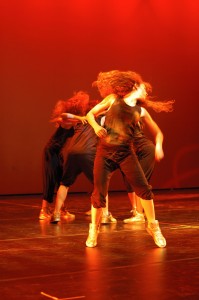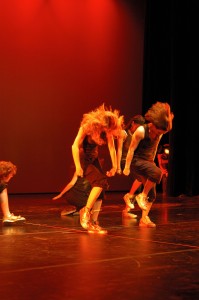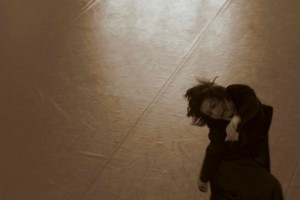by Janet Neidhardt
In March, 2013 I wrote a blog about working on a piece with my high school dance students based on bullying. We titled the piece: “I’m Taking It Seriously”. I wanted to give an update and provide a video that we created about the making of the dance as well as the finished product.
Since the performance of “I’m Taking It Seriously”, students who saw the dance still talk about it. When we discuss making a dance about something with social relevance it’s usually the first example they come up with now. I also have students who want to continue to make dances about bullying. They have started to look at it from a deeper perspective like expressing the inner emotions someone has when they get bullied.
As a dance educator I feel a responsibility to my students and community to serve them through dance and show that dance can be so much more than beautiful technique, it can communicate ideas and messages that might shift how we treat one another. It’s clear that the conversation about bullying is an ongoing one and that dance, being an art form in which we can express ourselves, is a wonderful means to spur conversation–and possibly make changes.
Loyola Academy Intermediate Dance Class from Loyola Academy on Vimeo.

Contributor Janet Neidhardt has been a dance educator for 10 years. She has taught modern, ballet, and jazz at various studios and schools on Chicago’s North Shore. She received her MA in Dance with an emphasis in Choreography from the University of North Carolina-Greensboro and her BA in Communications with a Dance Minor from the University of Wisconsin-Madison. Throughout her time in graduate school, Janet performed with Sidelong Dance Company based in Winston-Salem, NC.
Currently, Janet teaches dance at Loyola Academy High School in Wilmette, IL. She is the Director of Loyola Academy Dance Company B and the Brother Small Arts Guild, and choreographs for the Spring Dance Concert and school musical each year. Janet is very active within the Loyola Academy community leading student retreats and summer service trips. She regularly seeks out professional development opportunities to continue her own artistic growth. Recently, Janet performed with Keigwin and Company in the Chicago Dancing Festival 2012 and attended the Bates Dance Festival.
When she isn’t dancing, Janet enjoys teaching Pilates, practicing yoga, and running races around the city of Chicago.











